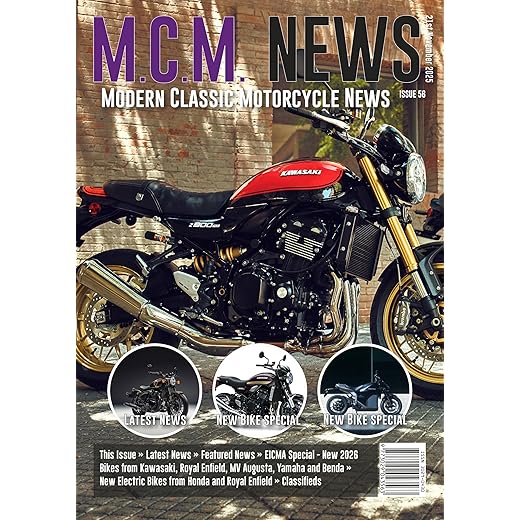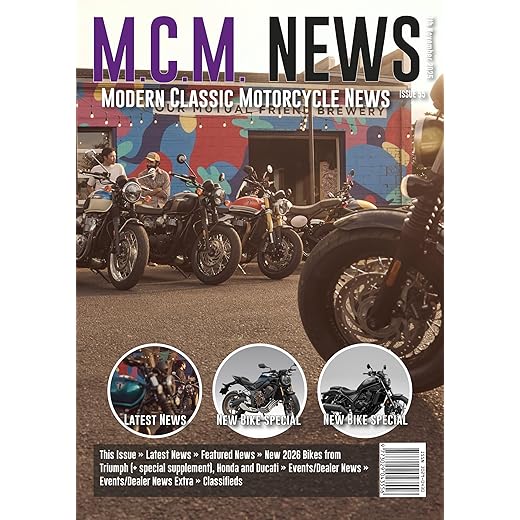
Honda UK – Beyond the bike: Growing Honda’s alternative material initiatives through Bio-based engineering and recycling
Honda’s triple action to zero[1] is a company-wide mantra that encourages alternative thinking and clever solutions to reduce the impact of Honda’s corporate activities on the planet.
The initiatives address carbon neutrality, clean energy, and resource circulation as the three leading factors that will see net zero emissions by 2050[2]. Beyond the creation of electric powered motorcycles and cars, and changes to production and logistic hubs to reduce CO2 output, Honda has also adopted the use of alternative materials on a number of motorcycles.
For example, the SH125i and SH150i Vetro use semi-transparent unpainted fairing panels – production of which produces 9.5% fewer CO2 emissions over a year at Honda’s Atessa factory compared to those of the standard painting processes[3]. In addition, a total of six bikes within the Honda range in Europe now feature recycled non-consumer plastics, and DURABIO™, a bio-based engineering plastic developed by Mitsubishi Chemical Group (MCG Group). It’s already in place on several Honda production motorcycles, with more to come, but what exactly is it and why is it such a game changer?
DURABIO™ is derived from Isosorbide, and is a cutting-edge, plant-derived material made from renewable sources like inedible corns and wheats. Through a refining process, natural starches from the corn are converted into glucose, then into sorbitol, and finally into isosorbide—a high-performance compound with a wide range of uses, which can replace traditional petroleum-based chemicals.
Bio-Based Innovation Meets High-Performance Design
Unlike conventional engineering plastics, DURABIO™, offers a unique combination of optical clarity, toughness, and surface durability. Its ability to offer both excellent transparency and vivid colour expression allows Honda to create sophisticated aesthetics without the need for painting, eliminating an entire step from the production process.
In addition to delivering an elegant, glossy finish, DURABIO™ exhibits high scratch resistance, impact strength, and long-term UV stability[4] – making it ideal for high-performance applications such as motorcycle components. These features have already been well received by motorcycling media in Europe, where DURABIO™ is used in the bodywork and windshields of Honda’s flagship CRF1100L Africa Twin adventure bike, the NT1100 tourer, ultra-versatile NC750X, the CB1000GT sports tourer, as well as the ‘two-wheeled SUV’ X-ADV and the Forza 750 maxi-scooters.
Expanding Use Across the Honda Motorcycle Line
Honda first introduced DURABIO™ in the windscreen of the CRF1100L Africa Twin family, released in March 2024. This made history as the world’s first motorcycle windscreen made from bio-based engineering plastic[5], and was quickly followed by the X-ADV utilising DURABIO™ in both its skirt cover and windscreen. At the same time, it was incorporated into the Forza 750’s handlebar central cover and front side cowl, seamlessly blending into its surroundings thanks to the high-quality finish.
The NT1100 came next. With its 25YM update it gained a redesigned front fairing, partially made of DURABIO™, whilst the current line-up was completed with the 25YM NC750X that adopted the material for its middle cowl, side cover, rear side cowl, and windscreen.
The NC750X marked another step in the application of DURABIO™ for Honda, with it becoming its first motorcycle to utilise coloured DURABIO™ on the bodywork of its Earth Black and Earth Ivy Ash Green colour options.
The 26YM CB1000GT, as unveiled at EICMA 2025, is the latest model to feature a DURABIO™ component, with its windscreen made of the material.
Multi-faceted approach
Whilst DURABIO™ is one approach to consciously reducing consumption of plastics, Honda has employed a number of other approaches to its bikes to help move away from the use of raw materials.
Recycled automobile bumpers have long been used in the automotive division for non-structural parts such as under-covers and grilles[6] but thanks to design optimization the material, which had previously been difficult to apply to motorcycles, were applied to the luggage box of the 25YM NC750X and X-ADV, whilst the 25YM Forza 750 utilized the material on the base of its seat.
As part of Honda’s expanded use of recycled resin materials, the brand has started using pre-consumer recycled polypropylene (PP). These are materials derived from scraps generated during the manufacturing and moulding processes of automobile components and home appliances, which are crushed, compounded, pelletised and reused.
Because PP has known properties, it can be adjusted to have the same physical properties as virgin material, while also avoiding the risk of contamination with regulated chemical substances. The X-ADV and Forza 750 lead the charge on application, with each utilizing over 15 parts made from the material, whilst the 26YM CB1000F is the latest model to join the list, with its rear mudguard and seat bottom panel made from pre-consumer recycled PP.
Driving a Circular Future with Smart Resource Use
Honda’s adoption of DURABIO™ and other recycled materials is in keeping with its broader five key principles of resource circulation, aimed at shifting from a linear “take-make-dispose” model to a circular value chain. The principles are:
- Business Innovation: Building recycling-oriented systems that maximize material use across a product’s lifecycle.
- Advanced Recycling: Investing in new recycling technologies to improve economic and environmental performance.
- Data Traceability: Leveraging digital tools to track lifecycle CO2 emissions and improve resource recovery rates.
- Circular Design: Engineering products for easy disassembly and reuse, including selecting materials with high recyclability.
- Circular Value Chain: Collaborating with supply chain partners to ensure consistent sourcing, processing, and reuse of recycled materials.
Honda is focused on reducing dependence on finite resources and developing scalable solutions to minimize ecological impact. Currently, about 90% of raw materials used in new vehicles are newly mined[7]. By adopting renewable and recyclable alternatives like DURABIO™, Honda is actively working to lower its CO2 emissions, conserve resources, and mitigate any future risks of material scarcity[8].
Honda’s integration of DURABIO™ into its motorcycle lineup is reflective of the brand’s mission to deliver the “joy and freedom of mobility”, while actively trying to reduce its environmental footprint.
References:
[1] https://global.honda/en/environment/materiality/
[2] https://global.honda/en/environment/initiatives/carbon_neutrality/
[3, 8] https://www.honda.co.uk/content/dam/sustainability/Honda-EER-Full-Report-Final-Version-for-Publication.pdf
[4] https://www.m-chemical.co.jp/en/products/departments/mcc/pc/product/1201026_9368.html
[5] https://www.mcgc.com/english/news_release/01963.html
[6] https://global.honda/jp/news/2023/4230928.html
[7] https://global.honda/en/environment/initiatives/resource_use_and_circular_economy/
Watch, like and subscribe to our Youtube channel






For more Honda Motorcycles UK news, check out our dedicated page Honda Motorcycles UK News
or head to the official Honda Motorcycles UK website honda.co.uk/motorcycles.html.
About Honda Motorcycles
Honda is the world’s largest motorcycle manufacturer, founded in 1948 by Soichiro Honda. The company is known for producing reliable, high-quality motorcycles and is the world’s largest manufacturer of internal combustion engines. Honda’s early focus on reliable four-stroke engines and innovative designs, like the highly successful Super Cub, helped it become a global leader in the industry.
* Disclosure: This page may contain affiliate links, which means I may earn a commission (at no cost to you) if you click on the link and make a purchase. Any money made goes straight back into the website and magazine. Your support is appreciated!










